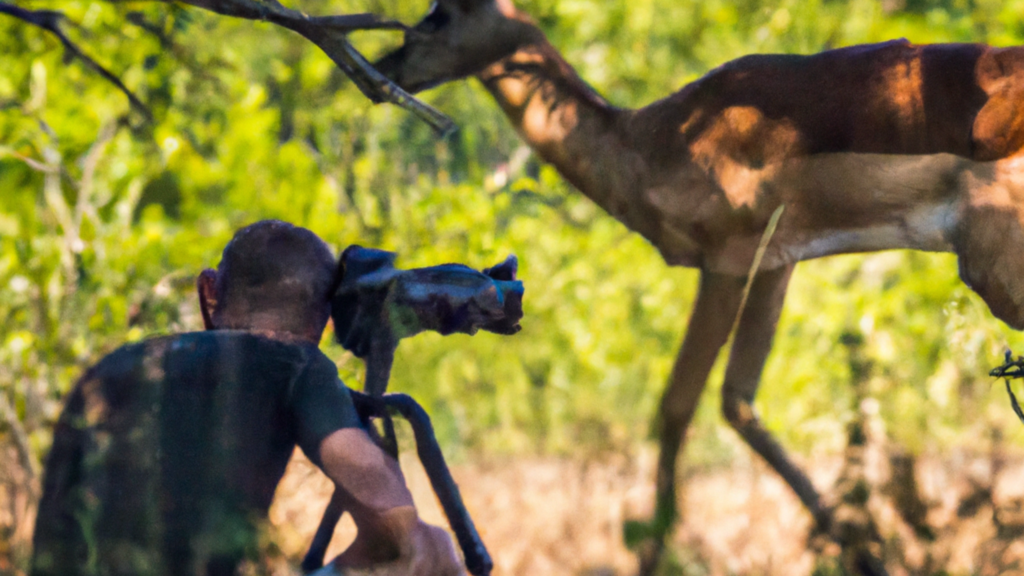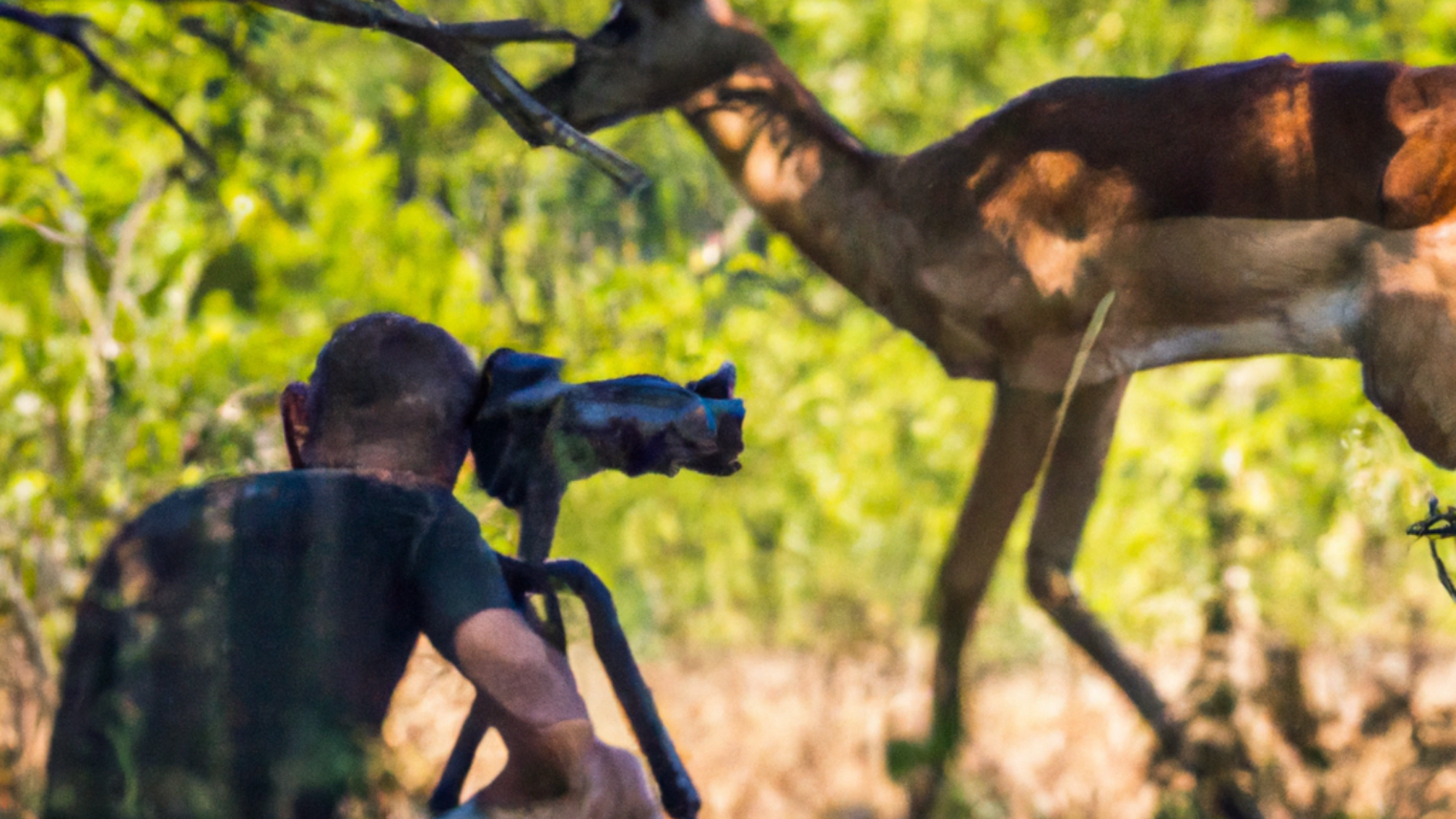
Wildlife photography is a thrilling yet challenging genre that demands patience, skill, and the right equipment. Whether you’re shooting majestic lions on the African savannah or capturing birds in your local park, every moment in wildlife photography is unpredictable and often fleeting. Having the right gear and knowledge will make all the difference in capturing those stunning shots that showcase the beauty of nature.
In this post, we’ll explore the essential tools and techniques that every wildlife photographer—beginner or pro—needs, along with a few carefully selected product recommendations to help you elevate your craft.
1. Understanding Wildlife Behaviour
Before you can capture the perfect wildlife shot, it’s important to understand your subject. Knowing the behavior and habits of the animals you’re photographing will not only help you anticipate their movements but also ensure you can stay safe while getting close to the action.
For example, many animals are more active during the early morning or late afternoon (known as the “golden hours”). If you’re photographing birds, you’ll need to know their flight patterns and perching habits to position yourself for the best shot.
Pro Tip: Patience is Key
Wildlife photography often involves waiting—sometimes for hours—to get the perfect shot. Bring plenty of patience and be prepared to observe and learn from the animals you’re photographing. The more you understand their behaviors, the more likely you’ll capture those once-in-a-lifetime moments.
2. Choosing the Best Camera
Wildlife photography requires a camera with fast autofocus, rapid continuous shooting, and excellent low-light performance. Since many animals are elusive and quick, you need a camera that can keep up with the action without missing a beat.
Recommended Camera: Nikon Z6 II
The Nikon Z6 II is a great option for wildlife photographers. It boasts a 24.5MP sensor, excellent autofocus capabilities, and a continuous shooting speed of 14 frames per second, making it perfect for capturing fast-moving animals. Its rugged, weather-sealed body is ideal for outdoor adventures, whether you’re trekking through forests or photographing animals in wet, harsh environments.
For those just starting, the Canon EOS 90D is a solid DSLR option. It’s known for its impressive 32.5MP resolution and fast autofocus, and it can shoot up to 10 frames per second, making it well-suited for capturing wildlife in motion.
3. Lenses: Reach Matters
When photographing wildlife, getting close to your subject can be difficult—and often unsafe. That’s why telephoto lenses are an essential part of a wildlife photographer’s kit. These lenses allow you to zoom in from a distance and capture animals in their natural habitats without disturbing them.
Recommended Lens: Canon EF 100-400mm f/4.5-5.6L IS II USM
The Canon EF 100-400mm f/4.5-5.6L IS II USM lens is an excellent choice for wildlife photographers. Its versatile focal length gives you the flexibility to capture close-up details and distant subjects alike. Its built-in image stabilization ensures sharp shots even when zoomed in, and its weather-sealed body makes it durable for outdoor use.
For Nikon users, the Nikon AF-S NIKKOR 200-500mm f/5.6E ED VR offers a longer reach, allowing you to photograph distant wildlife with ease. Its vibration reduction (VR) feature ensures stability, even in challenging conditions.
4. Mastering the Art of Stealth
Wildlife photographers need to be as unobtrusive as possible. The goal is to capture animals behaving naturally, so staying hidden and quiet is crucial. Wearing neutral-colored clothing that blends into the environment and using camera gear that doesn’t make excessive noise can make a significant difference.
Additionally, consider investing in a telephoto lens with silent autofocus, like the ones mentioned earlier, to avoid startling your subject with loud focusing sounds.
Pro Tip: Use a Bean Bag for Stability
Instead of lugging around a large tripod, many wildlife photographers use bean bags to stabilize their camera when shooting from vehicles or uneven terrain. Bean bags are lightweight and versatile, making them a great option when you’re on the move.
5. Tripods and Monopods for Steady Shots
While it’s important to remain agile in the field, having a steady hand is key to capturing sharp images, especially when using heavy telephoto lenses. A sturdy tripod or monopod can help reduce camera shake and keep your shots sharp, especially in low-light situations.
Recommended Tripod: Gitzo Series 2 Traveler
The Gitzo Series 2 Traveler tripod is ideal for wildlife photographers. It’s lightweight, durable, and highly portable, making it easy to carry while hiking or traveling. Its sturdy carbon fiber build ensures stability even when supporting heavier telephoto lenses.
If you’re looking for something more compact, a monopod like the Manfrotto XPRO Monopod is a great alternative. It provides stability without sacrificing mobility, perfect for those long treks where every ounce counts.
6. Lighting: Working with Natural Light
Wildlife photography typically relies on natural light, as using a flash can scare away animals or disrupt their behavior. Understanding how to work with different lighting conditions is essential for capturing stunning images.
Tip for Beginners: Embrace Golden Hour
The golden hour, which occurs just after sunrise and before sunset, offers soft, warm lighting that can add depth and dimension to your wildlife photos. Shooting during this time not only enhances the visual appeal of your images but also increases your chances of encountering more active wildlife.
When shooting in harsher midday light, try to position yourself so that the sun is behind you, illuminating the animal while reducing harsh shadows.
7. The Importance of Silent Shooting Modes
Wildlife photographers must often remain as quiet as possible to avoid spooking animals. Many modern cameras come equipped with silent shooting modes that reduce or eliminate the sound of the shutter, making them perfect for sneaking close shots without startling your subject.
Recommended Feature: Silent Shutter Mode
Both the Nikon Z6 II and the Sony Alpha a7 III offer silent shooting modes, making them excellent choices for wildlife photography. Silent shooting ensures that you can capture candid animal behaviors without disturbing the scene.
8. Backup and Storage
Wildlife photography can involve hours of shooting and thousands of images, so having adequate storage and backups is essential. High-speed memory cards are a must for handling the burst shots often required to capture fast-moving subjects.
Recommended Accessory: SanDisk Extreme PRO SDXC Card
The SanDisk Extreme PRO SDXC Card is perfect for wildlife photographers who need to capture images at high speeds and in large quantities. Its fast write speed ensures you can shoot in burst mode without delays, and its large storage capacity means you won’t run out of space mid-shoot.
Additionally, always carry a portable SSD, such as the Samsung T7 Portable SSD, to back up your photos in the field. Having an external backup ensures your images are safe, even if something happens to your memory card.
Conclusion
Wildlife photography is as much about preparation as it is about capturing the moment. With the right camera, lens, and accessories, along with a deep understanding of the animals and environment, you can elevate your wildlife photography game and bring the beauty of nature to life.
Whether you’re photographing birds in your backyard or planning a safari adventure, the key is to stay patient, be observant, and have the right gear on hand. With these tips and equipment recommendations, you’ll be well-equipped to capture stunning wildlife images that tell the stories of the natural world.
Liked this post? Check out some of our others:
How to Craft Cinematic Stories for Short-Film Makers

